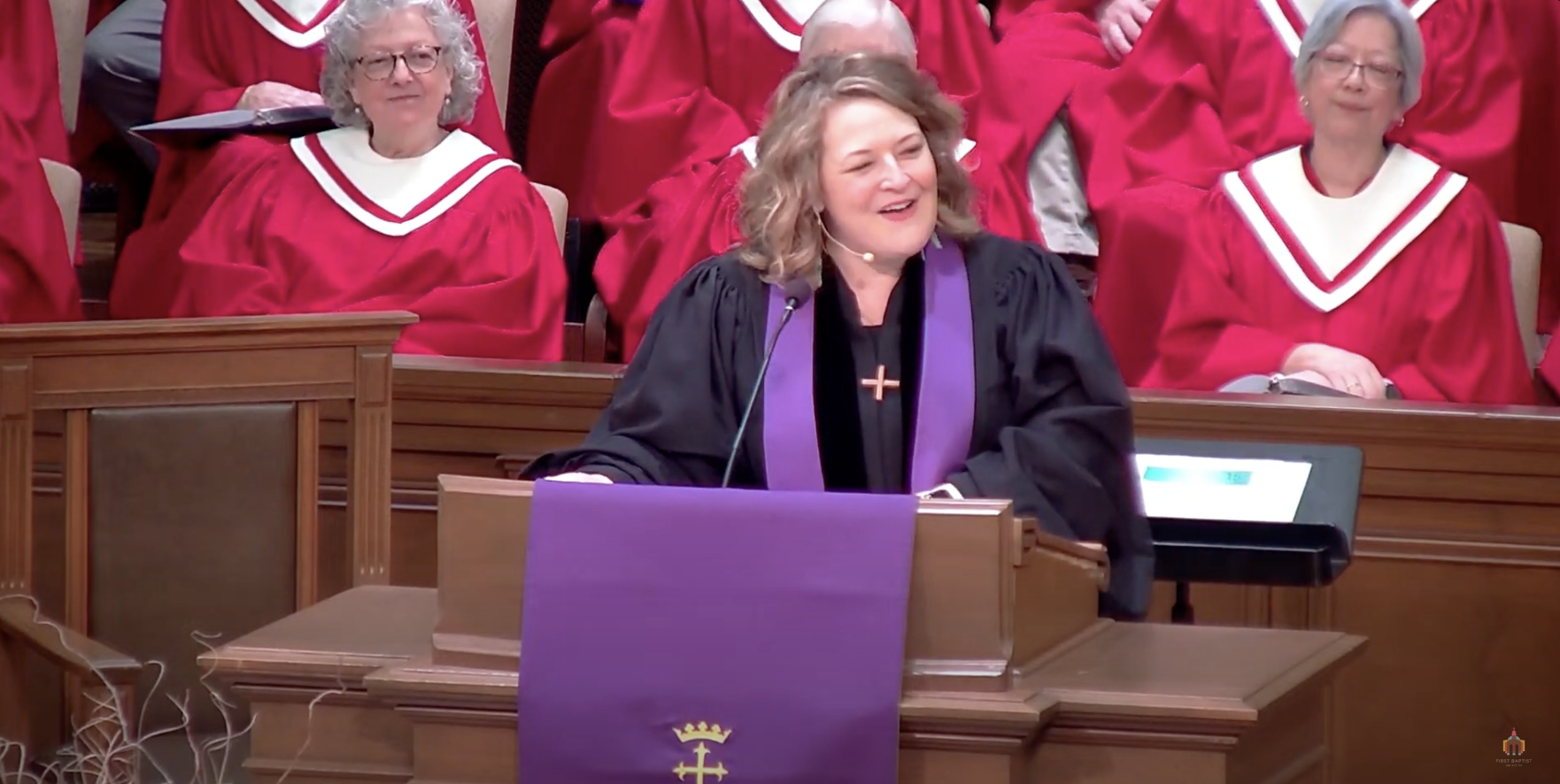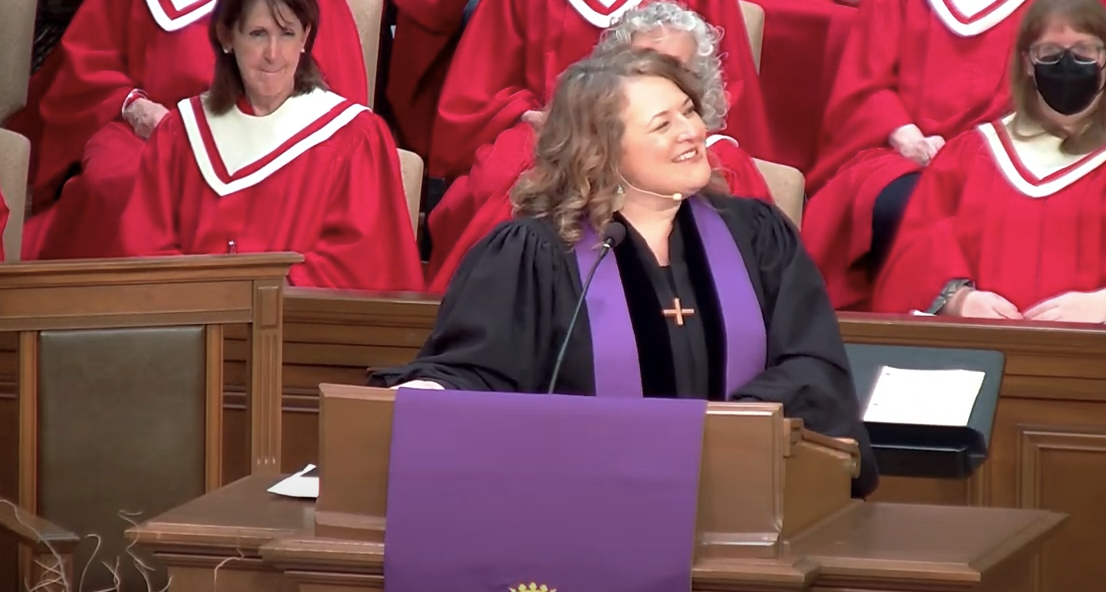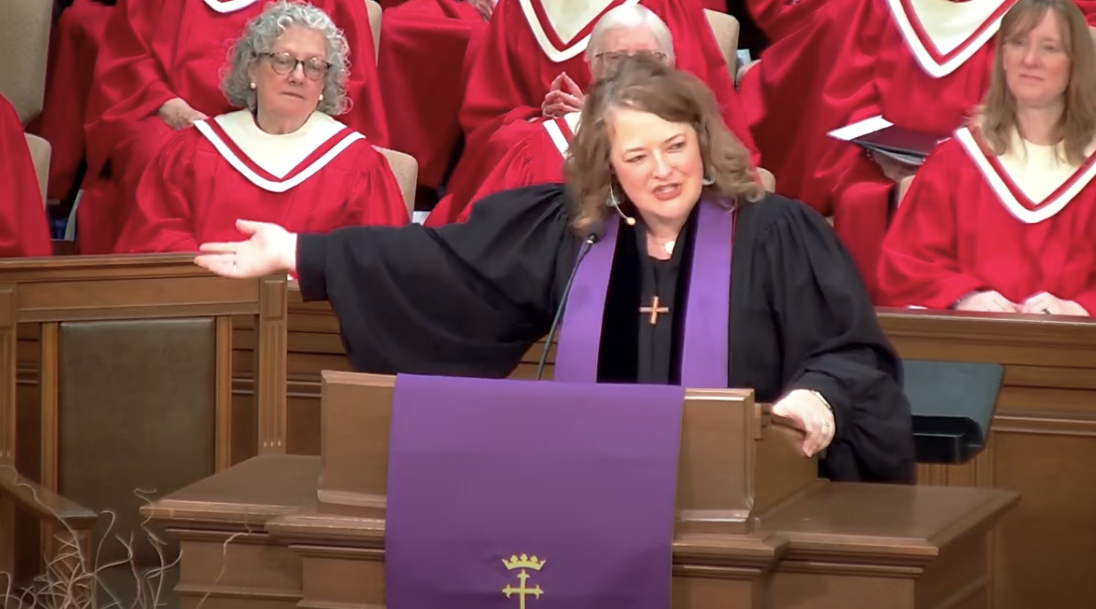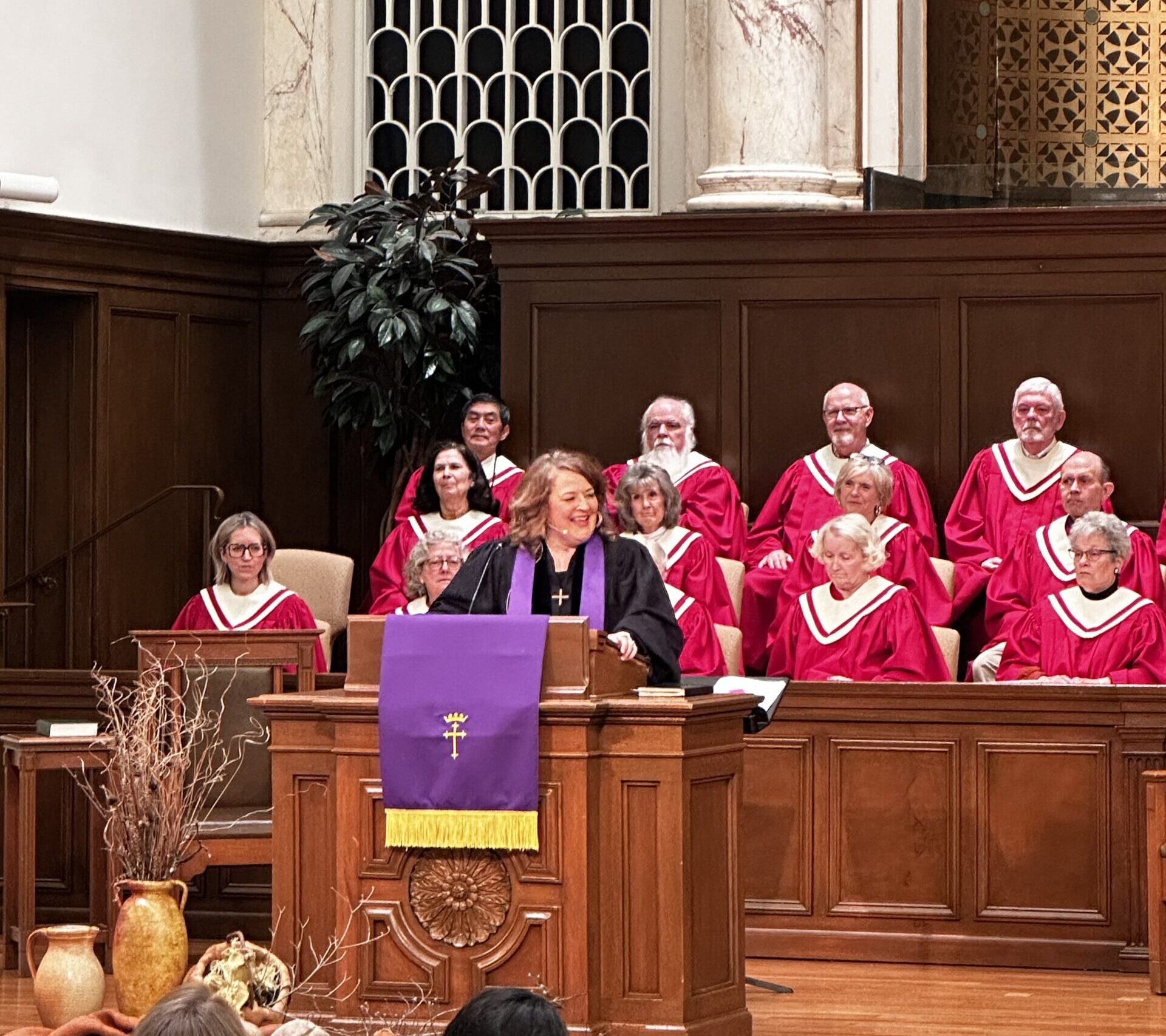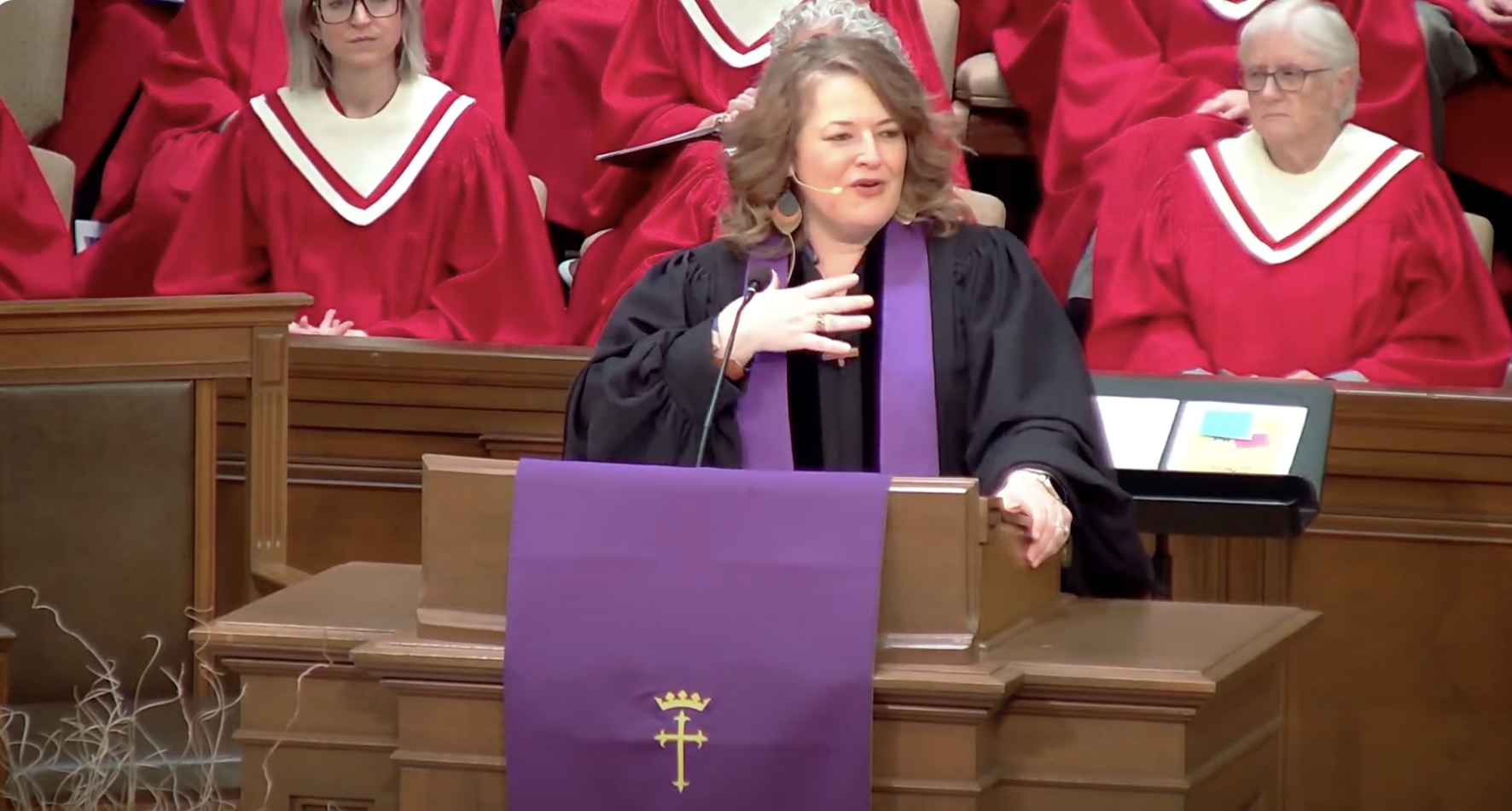I.Our church is one of countless around the world who are marking Palm Sunday today with rituals of celebration. We saw it with our children and youth waving palms. We hear it with the beautiful music of the Ardmore Brass today. We feel it in our hearts with the longing to lay down the burlap and spare wilderness of Lent, so that we can reach toward the joyous celebration of Easter. This longing for what lies ahead may have been what caused my kids to ask me yesterday, “now do I wear my new Easter clothes tomorrow or next Sunday?” Holy Week asks us to lift our eyes, to survey the scene, to both zoom out and in so that we can try to capture the mood and spirit of what’s happening. And it begins on Palm Sunday.
II.The gospel of Mark’s take on this story first introduces us to the two disciples, sent by Jesus as their entourage was approaching Jerusalem to fetch a donkey. Mark doesn’t tell us which two disciples Jesus sent, but I can’t help but wonder if perhaps James and John were sent for the task. Just before our passage begins, we read that James and John are tussling over their place right by Jesus’s side – one at his right hand, and one at his left, both bathed in the light of his glory. Wouldn’t it be a lesson in humility if the two who wanted the greatest proximity to Jesus’s power become the two on “donkey detail?”1 Not their ministry, but his. Not their significance but his. Discipleship, in all its unassuming glory.
Then, after the disciples, we get some time with the donkey. Jesus tells his disciples that the donkey is a colt, unridden and tied up and waiting to be used because “the Lord needs it!” Between the donkey and the procession that follows, these first hearers of Mark’s gospel would surely think back to the prophet Zechariah, whose promise was clear: there will be a king coming to Jerusalem, Zechariah says, “triumphant and victorious is he, humble and riding on a donkey.” He will arrive by way of the Mount of Olives and announce “peace to the nations,” for on this “day of the Lord,” he will “become king over all the earth.”2I imagine those who saw what happened next snapped their heads from side to side, asking neighbor and stranger alike, “do you see what’s happening here? Do you realize what this means?” But let’s be clear: not a war horse, but a donkey. Not an animal for pomp and circumstance, but one for burden and labor.3 Not even his own animal, but a borrowed one.
From the disciples to the donkey, now we look to Jesus. His face has been set on Jerusalem, and Jesus is now the one at the head of the parade, the object of everyone’s affection, the receiver of the palms and the cloaks, the one upon which all eyes are fixed. As our week together unfolds, our eyes will stay upon Jesus.
But finally, where I want us to dwell today is on the crowds, on all the people who gathered to cheer at the sight of Jesus atop the donkey, who threw down their cloaks and waved their palms and shouted “hosanna” for all to hear. The leafy branches they waved had a long history in Jewish religious tradition, particularly the Feast of Booths, a holy festival where crowds processed around the temple altar, waving branches as the Lord had once instructed the people of Israel through Moses to, as Leviticus said, “take the branches of palm trees, boughs of leafy trees, and rejoice before God.”4 And the cloaks they laid at his feet would further reinforce that they thought him to be royalty; it is what subjects would do for a king.
Mark tells us they cried out, “hosanna!” Remember – the word “hosanna” juxtaposed praise and deep need. Hosanna meant “save us!” Hosanna — “help us now!” All together in the simmering energy around them of Passover with Pontius Pilate and his empire breathing down the necks of his people, the crowds who gathered shouted hosanna to their humble hero, save us to their meek Messiah, liberate us to their weak-yet-strong king.
As we think about the crowds, let’s remember that crowds are specific: made up of particular people at a particular time. We know Jesus’s disciples were in the crowd with him, and I imagine Simon and Andrew looking around at the scene and remembering their nets dropped on the sand, or Levi thinking about how far he’d come from his tax booth when Jesus called. But I wonder who else came with Jesus from Galilee to Jerusalem, who else had made this journey by his side, who else filled the crowds that day.
Were the crowds peppered with the people Jesus had healed along the way? Maybe the Geresene demoniac here, or the hemorrhaging woman there. Maybe the boisterous former leper and the past paralytic with his four friends who lowered him to Jesus, but now with no mat in sight. Maybe the man with the withered hand whose Sabbath healing kicked up the very firestorm that hung just on the horizon ahead.
Perhaps there were some in the crowds who thought, like we do at a concert with our favorite bands, that Jesus might reprise some greatest hits in Jerusalem. “Maybe he’ll tell the story of the sower again! I did love that one about the mustard seed!,” they wondered excitedly. “Remember when he fed all of us on the lakeshore? Maybe he’ll do that again! Oh oh but what about when he walked on the water! Surely he’ll find some water and do that one more time!”
Were the Pharisees there too, along the scribes and religious leaders, tucked away to monitor the trouble-maker and his adherents? Were the Roman soldiers hiding their curiosity along the periphery as they slid behind a tree? Was Mary there in that crowd, watching her son make his way into Jerusalem? Were you there? Were we?
III.“Collective effervescence” is a term coined by German religious scholar, Emile Durkheim, back in 1912.5 According to him, collective effervescence occurs when a community or society comes together and simultaneously communicates the same thought, or participates in the same action, or feels the same feelings. Such an event can cause “collective effervescence,” exciting individuals and unifying the group. Think of a coliseum full of fans doing the wave at a football game, or a stadium full of Swifties at the Eras Tour singing one of her infamous bridges, or a host of people dancing with jubilation at the Pride Festival, or civil rights marchers as they set out to cross the Edmund Pettus Bridge. You feel giddy and light, swept up into the transcendence of the moment. Researchers tell us these kinds of experiences inspire awe, connect people to one another, encourage collaboration, enact belonging, all growing our mental, emotional, and physical well-being.
As beautiful as these expressions might be – and, on this side of the pandemic with rampant isolation and persistent polarization, desperately needed – I have to believe there’s a thin line between collective effervescence and a mob mentality.6It starts harmlessly enough, I imagine. A comment here, a callout there. A disappointment that you can’t shake. Threats to collective beliefs or behaviors cause us to crave conformity. Conformity is traded for belonging, and the fear of missing out (or, what the kids call FOMO) drive us to act impulsively and make rash decisions. As a group herds, the herd tends to shift into more extreme spaces. Conflicts escalate. The minority is marginalized. Dissent is discouraged. Clear thinking becomes muddy. No one is at their best. At its worst, shared intimacy of a large group – collectively feeling the effervescence of the moment – can become a downward spiral of coordinated violence.
So we ask: how does a crowd turn?
Did you happen to notice that it’s March Madness around here?I did see that several of you have your Carolina blue or State red on. I said to a few of you earlier this morning that at least everyone is happy this morning, right? Can’t assume that’s the case by Easter! Anyways, just a few nights ago, I had gotten home late from a meeting and, as luck would have it, hadn’t checked the game scores before I took a quick scroll through Facebook. Having lived for years in Kentucky before moving to North Carolina, I have a number of friends who are big fans of the Big Blue Nation. (That would be the University of Kentucky for the uninitiated!) And I kid you not, in the span of hours, the very same friends of mine who were calling UK’s coach John Calipari one of the all-time greats in college basketball history were calling for his firing when the 3rd-ranked Kentucky lost to 14th-ranked Oakland in a historic round one defeat of the storied team. Post after post on my newsfeed: “Calipari’s got to go. That’s it, I’ve seen enough. Basketball is fundamentally about winning, and we can’t afford to lose anymore.”
How does a crowd turn?
Did you notice that it’s an election year? Election seasons don’t always bring out the best in us, particularly among Christians – that’s putting it mildly, I realize. For you see, in the last election cycle, the very same Christians that were outraged at one past president’s affair were calling for their congregants to vote for another president whose morality is… well, not what we might call upstanding. Leader after leader, pundit after pundit said it clearly – we have to remember the Court! That matters more than anything else, any other moral conviction, so hold your nose, and fall in line, and cast your vote.
How does a crowd turn?
The king they wanted wasn’t the king they got. The power they wished he’d wield wasn’t the power he actually wielded. At the end of the day, the kingdom of God wasn’t the kingdom of this world! The peasants were still poor. The rulers were still on their thrones. The people were still oppressed and exploited. Jews were still subject to Romans. The crowds that cried “Hosanna” on Sunday will shout “crucify him” on Friday. The crowds that hailed a king on Sunday will call for his execution on Friday.
The crowds turn, oh they turn. How easy it would be for us to sit here in our glorious hour of worship with beautiful music and gorgeous palms and children everywhere we turn and think, “that wouldn’t have been me! I would never!” Too often, we have palms in our hands and anger on our lips, because we think our expectations aren’t met. All these years later, the trauma still triggers. The loneliness won’t go away. The treatment hasn’t worked. The job hasn’t gotten easier. The relationship still keeps you up at night. The struggle is still real. Desperation has settled into the marrow of our lives. “Save us!,” we once cried out to Jesus, and now wonder if he ever even heard us in the first place. The palms we once waved, heads raised, faces jubilant, have been replaced with the phone, the bottle, the calendar, the codependent relationship, and we can’t be bothered to even look up.
How does a crowd turn?, we wonder. How can it not?
IV.But how can it not for us?, we ask. To we who long for Jesus, to we who have committed our very lives to following in his way, what is to keep us from being caught up and swept away in the crowd? What is to tether us to ourselves and to our Lord in a way that keeps us from turning to the crowds on Friday? Friends, I tell you – what keeps us and holds us is Jesus. It is Jesus, again and again. Jesus, the one who comes. The one who liberates. The one who, “though he was in the form of God, did not regard equality with God as something to be exploited, but emptied himself, taking the form of a slave, being born in human likeness. And being found in human form, he humbled himself and became obedient to the point of death— even death on a cross.” Jesus.
His is the leadership we follow. His is the way we walk. When the crowds of our lives – no matter the topic or issue – pull our eyes from side to side, when we feel whisked into this anger or whipped up by outrage, Jesus asks us to come to him. Come, little children. Come, friends and neighbors. Come, strangers and enemies. Come, you who doubt and you who are afraid. “Come to me,” Jesus says, “all you who are weary and carrying heavy burdens, and I will give you rest.”
This week reminds us that when we journey with Jesus, his way will lead us to an upper room. It will ask for our vulnerability and call us to confront our loyalty. It will lead us into the darkness of Friday’s shadows. It will take us all the way to the cross. The way of Jesus is a way that empties us, again and again.
V.Of Palm Sunday, Frederick Buechner writes this: “Despair and hope. They travel the road to Jerusalem together, as together they travel every road we take — despair at what in our madness we are bringing down on our own heads, and hope in him who travels the road with us and for us and who is the only one of us all who is not mad.”7
And as the road winds ahead to the cross, my prayer for you, beloved people of God in this time and place, is that you know that it is a way paved with blessing. This road to the cross is prepared for the crowds, for the demonstrators and the donkey-fetchers, the deniers and the betrayers, the delighted spectators and the angry mobs, the grieved and the grieving, those in power and those whom power abuses. This road to the cross welcomes children and youth, middle-agers and seniors, you and you and you and me. To move from the sidelines into the street, linking arms together so that no matter the road, no matter the trial, no matter the march or the cause, we walk it together following Jesus, shouting hosanna every step of the way.
For amidst the crowds, amidst all that empties us of despair and fills us with hope, may you catch a glimpse toward the horizon of the promise of the fullness of life in Jesus that never, ever ends. Amen.

